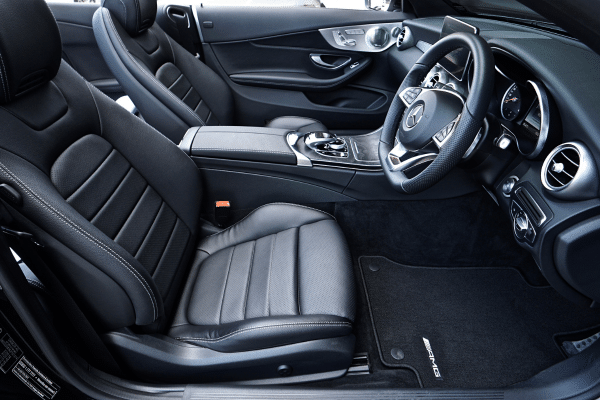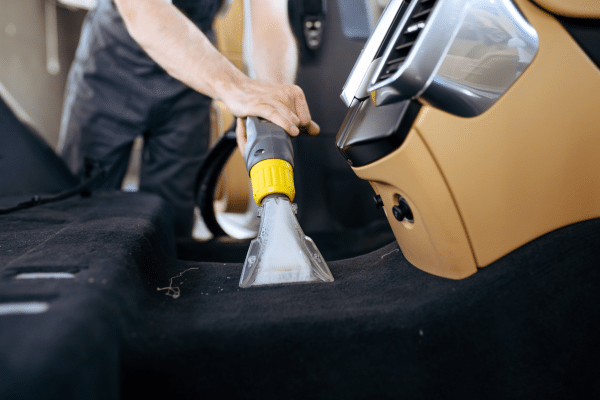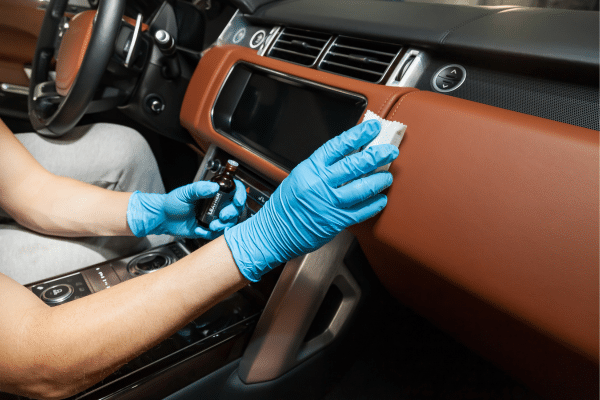A pristine car interior not only heightens the overall driving experience but also extends the life and value of the vehicle. However, with a myriad of cleaning products and methods available, discerning the right approach can be daunting. The key is understanding the specific needs of different materials inside your car. Regular maintenance with appropriate techniques and products can make all the difference in maintaining a fresh, damage-free car interior.
Contents
Understanding Your Car’s Interior Materials

Different cars flaunt diverse interiors, ranging from plush leather to durable vinyl. Recognizing the materials in a vehicle is the foundation of its care. Leather, for instance, requires a delicate touch as it can easily be damaged by harsh chemicals or abrasives. On the other hand, plastics and vinyl might demand more robust cleaners but can still suffer from streaks and scratches if not treated correctly. To preserve the aesthetic and functionality of a car’s interior, it’s crucial to be familiar with its materials before diving into the cleaning process.
Fabric, another common car interior material, comes with its own set of challenges. Unlike leather or vinyl, it absorbs spills and can retain odors, making it imperative to use cleaners designed for fabrics. Additionally, some fabrics can fade or shrink if exposed to certain chemicals, so always reading the label on cleaning products can save a lot of heartache. Knowledge of the vehicle’s material composition will determine the success of any cleaning venture.
Vacuuming – The Essential First Step

Dirt, dust, and debris can embed themselves into the car’s interior surfaces over time, making vacuuming a pivotal first step in the cleaning process. Without initial vacuuming, scrubbing or wiping might push this dirt deeper into the fabric or create scratches on more delicate surfaces. Utilizing the right vacuum attachments ensures that even the most hard-to-reach corners get a thorough clean.
Choosing the correct vacuum attachment can make a world of difference. A crevice tool can get into tight spots between seats, while a soft brush attachment is ideal for sensitive surfaces like dashboards or center consoles. Remember, a gentle touch is vital to avoid damaging any interior components. Once the dirt has been vacuumed away, the next cleaning steps become more effective and manageable.
Safely Cleaning Leather Surfaces

Leather is synonymous with luxury when it comes to car interiors. But this opulence demands special care. Leather can be particularly sensitive to both natural elements, like the sun’s UV rays, and to various cleaning agents. Over time, without proper care, leather can crack, fade, or even peel. To prevent such damage, it’s essential to opt for leather-specific cleaners that gently remove dirt and grime without compromising the integrity of the material.
After cleaning, leather often requires hydration, much like human skin. Leather conditioners are crafted to replenish the natural oils in leather, keeping it supple and preventing premature aging. When applying, it’s vital to use a soft cloth and to buff in circular motions to ensure even application. Once treated, leather not only looks refreshed but also remains protected against potential wear and tear.
Maintaining Fabric Seats And Surfaces

Fabric interiors, while comfortable and cozy, can pose unique challenges during the cleaning process. Spills, dirt, and dust can linger on these surfaces, leading to stains and odors. Dedicated fabric cleaners, tailored for automotive use, are designed to lift these stains without causing discoloration or damage. Before diving into a full cleaning session, it’s recommended to test any cleaning product on an inconspicuous spot to ensure compatibility with the fabric.
Drying is as critical as cleaning when it comes to fabric interiors. Any moisture trapped within can become a breeding ground for mold and mildew, compromising both the car’s ambiance and air quality. Once cleaning is complete, it’s beneficial to leave doors or windows slightly open, promoting air circulation. This aids in drying the fabric surfaces faster, ensuring a clean, fresh-smelling interior.
Cleaning Plastic And Vinyl Components

Modern cars incorporate a significant amount of plastic and vinyl in their interiors. These surfaces can collect dust, fingerprints, and grime, leading to a dull appearance over time. To restore their shine and prevent any potential UV damage, specially formulated plastic and vinyl cleaners are a must. These cleaners not only remove dirt but also leave a protective layer, guarding against future grime and sun damage.
Cleaning these surfaces often involves spraying the product onto a microfiber cloth rather than directly onto the component. This method ensures controlled application and minimizes the chances of overspray on unintended areas. After application, wiping in a consistent pattern, usually in straight lines, can help achieve a streak-free shine. Properly cleaned and protected plastic and vinyl components enhance the overall look of a car’s interior, making it feel almost brand new.
Windows And Windshields – Streak-Free Shine

The clarity of car windows and windshields isn’t just a matter of aesthetics; it’s also crucial for safety. Dust, grime, and streaks can obstruct the driver’s view, potentially leading to hazardous situations on the road. Automotive-specific window cleaners are formulated to tackle these challenges, ensuring a clear, streak-free finish without leaving residues that some household cleaners might.
When cleaning windows and windshields, starting from the top and working downwards prevents drips from spoiling already-cleaned areas. It’s also effective to wipe the inside of the windows in a horizontal direction and the outside in a vertical direction. This technique helps identify any streaks and their source, making them easier to address.
Odor Removal And Air Quality Improvement

A car’s confined space can amplify unpleasant odors, making it essential to address the root causes rather than merely masking them with air fresheners. Spills, food particles, and even dampness can contribute to an unpleasant car aroma. Activated charcoal bags and baking soda are natural remedies that effectively absorb unwanted smells, offering a long-lasting solution.
Ensuring good air quality isn’t just about combating odors. Over time, the car’s air conditioning system can accumulate dust and microorganisms, reducing the quality of the air circulated within. Cleaning vent areas and replacing cabin air filters periodically can help in maintaining a healthier and more pleasant environment inside the car.
The Bottom Line
Maintaining a clean car interior requires more than just a once-in-a-while tidying up. By understanding the materials present and using the appropriate cleaning methods, one can extend the life and beauty of a vehicle’s interior. From leather to fabric, plastics to windows, each component has its care requirements. Regular, meticulous cleaning not only ensures a pleasant driving experience but also upholds the car’s value. In the end, the time and effort invested in proper car interior care undoubtedly pays off.



